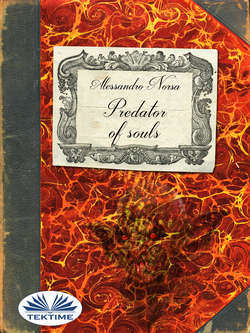Читать книгу Predator Of Souls - Alessandro Norsa - Страница 7
INTRODUCTION: OR, RATHER, WHERE THE INTENTION OF THE STUDY IS EXPLAINED
ОглавлениеLet us close our eyes for a moment and try to imagine ourselves as Dracula. How do we imagine him? Probably tall, old and dressed in black. The aquiline face, the thin nose with a pronounced bump and strangely arched nostrils. The noble and wide forehead, the hair shaved at the temples, but full on top. The eyebrows thick - they almost join up over the nose. The mouth, for what emerges under the moustache, is stiff and with an almost cruel profile. The teeth, white and strangely pointed, emerge from the lips, whose bright colour reveals an amazing vitality for a man of his age. The ears are pale, and pointed; the chin wide and strong, the cheeks firm, even though hollowed. The whole face is suffused by an incredible pallor.
This is the sinister figure of Dracula which, in a detailed and incisive manner, is described by Stoker in his novel. Like an expert folklore student, Stoker merges into one personage mythological figures from various traditions: above all those relating to the Irish folklore heritage mixed with myths and legends from other countries, particularly from Romania. For example, the characteristics of the particular eyebrows just observed we find again in some disturbing mythological figures from Eastern Europe, as we shall see, while the pallor is typical of the wandering ghosts, the souls of the dead. But let us turn again to the novel to touch on other elements that can be useful to us. Dracula is noble. He has fascinating manners and speaks various languages. But he does not have servants, he does not go to worldly receptions, he does not indulge in the earthly pleasures of good food or beautiful women. He has magic abilities and knows the language of animals so well that he can command them. He has the icy skin of the dead, his image does not reflect in the mirror, he possesses enormous physical strength and incredible speed of movement, he can hypnotise you with his stare, transform himself into a dog, a wolf or a bat. He sleeps during the day and at that time he looks dead, even if he is concious of what is happening around him. But why have these become the coordinates on which we orientate our knowledge of Dracula? Essentially you need the creative genius of the famous Irish novelist who, in an astute way, to greater convince the reader, made the presence of Dracula realistic, associating it with a personage really identifiable in history: the ferocious Wallachian Voivoda Vlad III who lived from 1431 to 1476, son of Vlad II called Dracul. This chief ruthless enemy of the Turks, inheriting his nickname from his father and became known also as Dracula, a name that in Romanian means the devil, the suffix âulâ corresponds to the definite article, which, in that language, is put at the end of the word.
It should be underlined that from a historical point of view Vlad III, also called Tepes (Å£eapa in Romanian means stake or pole), has never been associated with vampirism. There were however some coincidences that could have effectively lead to the comparison with that Romanian prince so present in Eighteenth century European literature. The reason for such notoriety resides in some customs that resemble vampires. Above all the method of execution that Vlad III preferred was impalement, which is the practice considered most suitable to destroy vampires. Other convictions, instead, regard its gory operation. Vlad III was in fact likened to those men who were marked by particular wickedness and who, after their death, were said to have transformed into vampires. Tepes, in the end, was decapitated as was done to those who were accused of vampirism and, after the burial, his tomb was opened and looted, which makes one think about the lengths to which the local population would resort. In the course of reading the book we find again these convictions associated with particular exorcist practices developed in an authentic vampire culture which has continued over the centuries.
